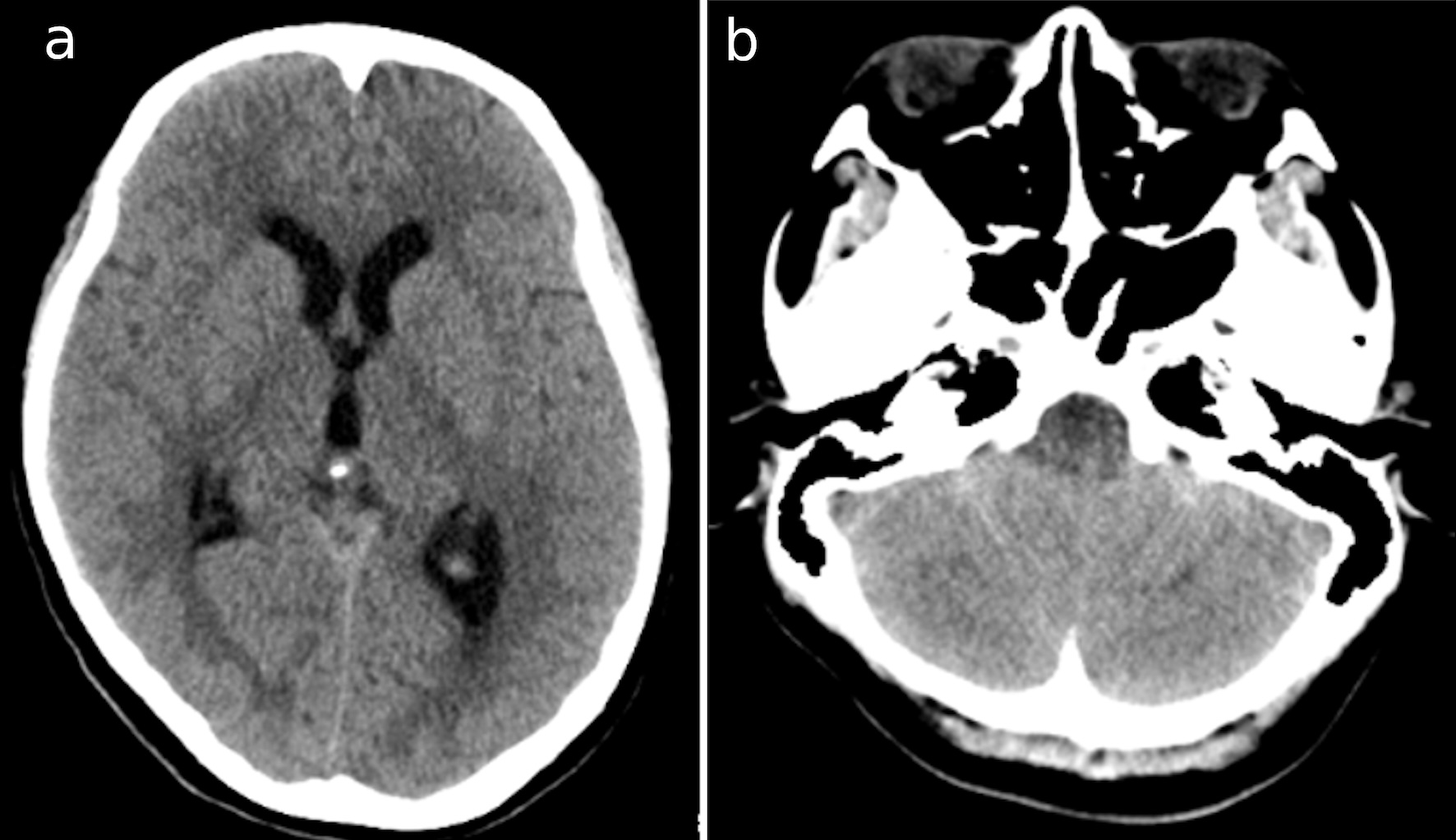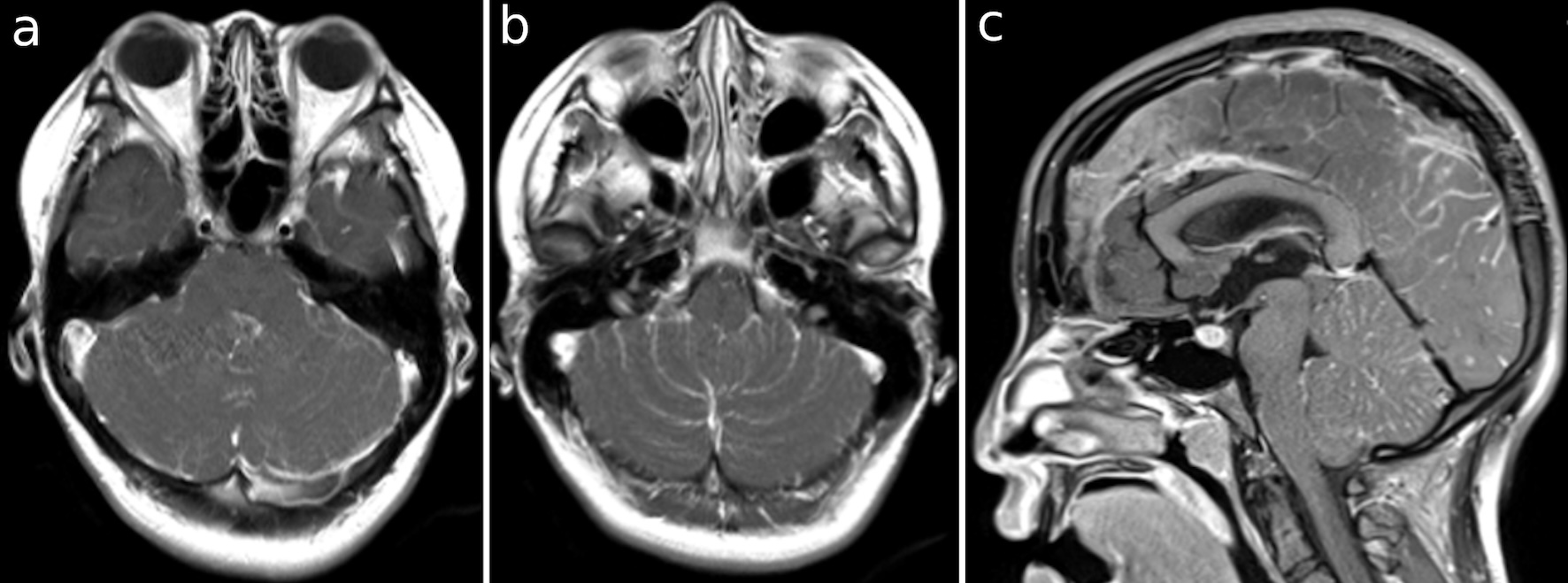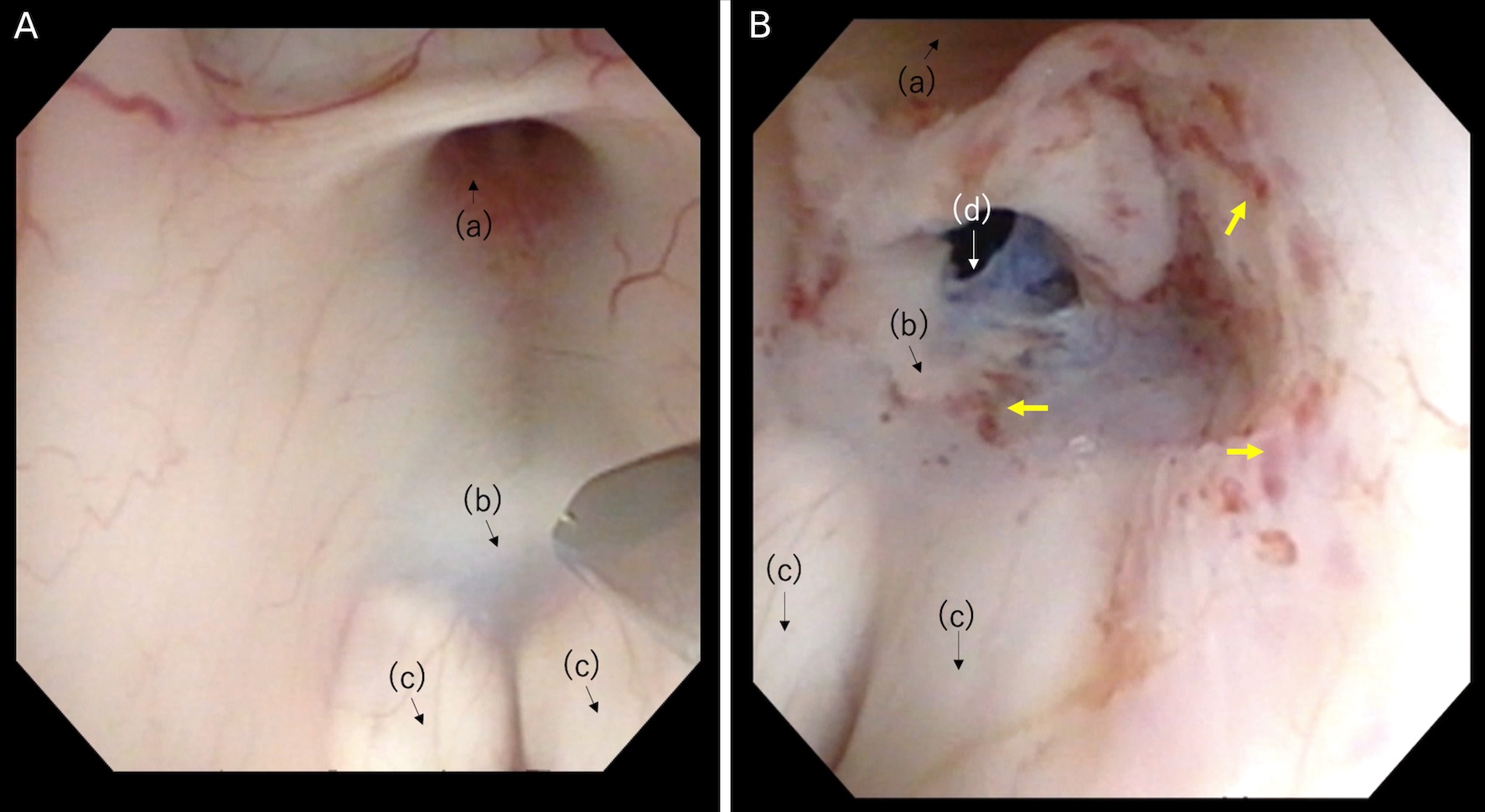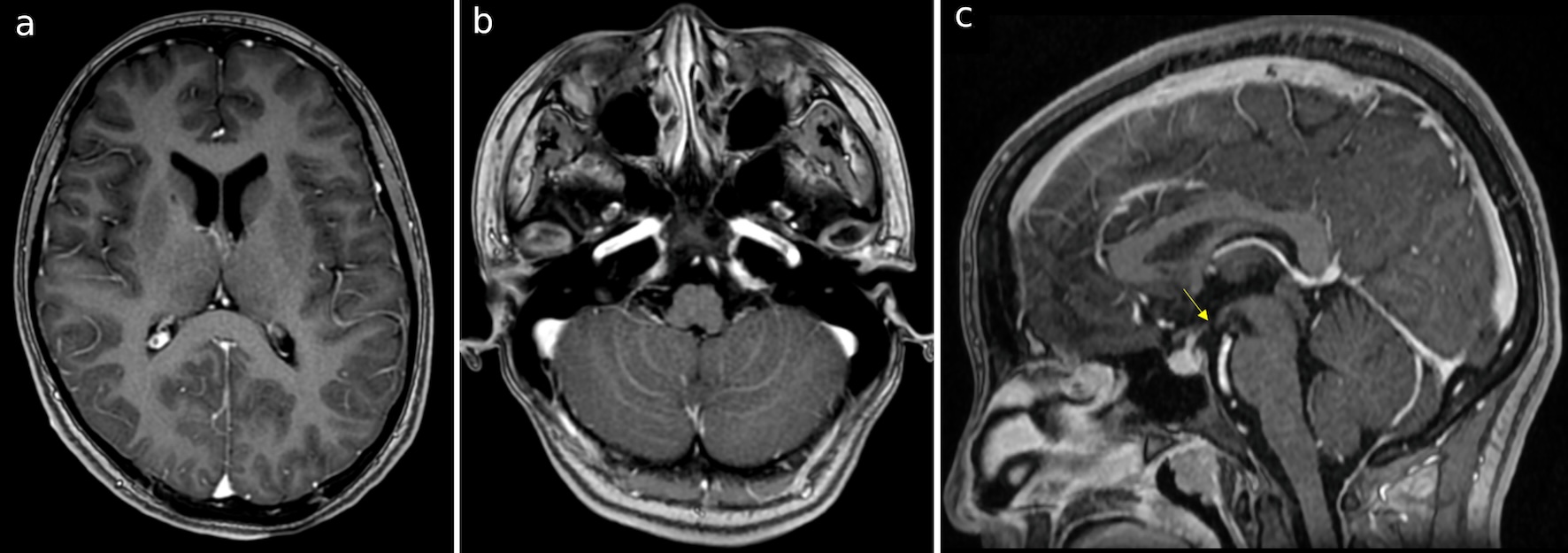
Figure 1. CT images at the second admission show (a) the dilatation of bilateral and third ventricles; and (b) cerebellar swelling. CT: computed tomography.
| Journal of Medical Cases, ISSN 1923-4155 print, 1923-4163 online, Open Access |
| Article copyright, the authors; Journal compilation copyright, J Med Cases and Elmer Press Inc |
| Journal website https://jmc.elmerpub.com |
Case Report
Volume 16, Number 4, April 2025, pages 135-139
Noncommunicating Hydrocephalus Caused by Aseptic Meningitis Can Be Treated With Endoscopic Third Ventriculostomy
Figures



